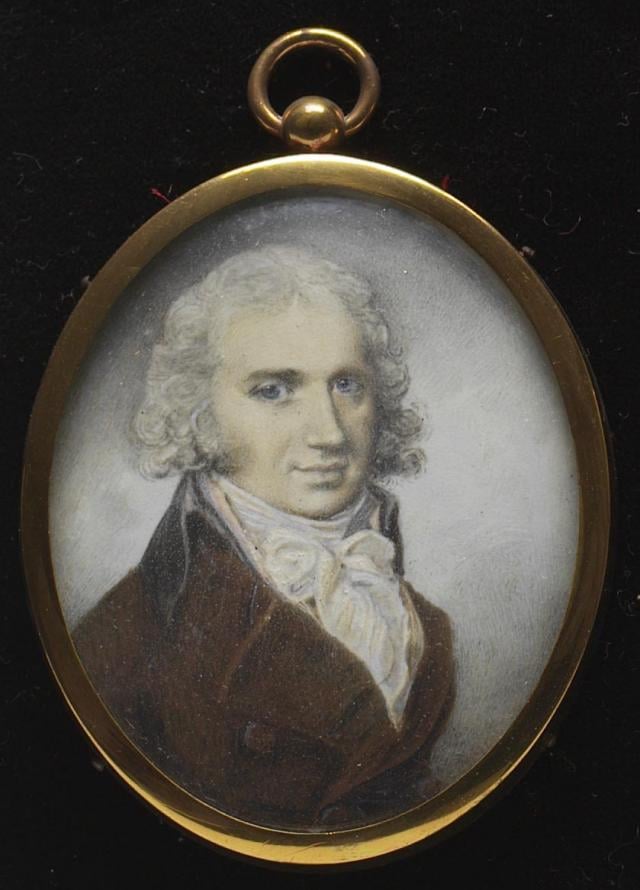Focus on John Wedgwood and the founding of the RHS
Wedgwood and the Royal Horticultural Society (RHS) have enjoyed a long and close relationship. In fact, the longest possible relationship because it goes back to before day one with John Wedgwood, the first son of Josiah Wedgwood 1.
John was born in 1766 and educated at Warrington Academy and the University of Edinburgh. He was a partner in Wedgwood from 1790 – 1793.
He developed a growing interest and fascination for all forms of agriculture, including flowers and vegetables, and the cultivation of tropical fruit and other exotic plants.
As early as 1801, John suggested in a letter to William Forsyth, head gardener to King George III at St. James’s and Kensington, the founding of a horticultural society for the sole purpose of encouraging horticulture in all its different aspects. Three years later, in 1804, the suggestion came to fruition with the founding of a society.
Although the original concept came from John, it was Sir Joseph Banks, President of the Royal Society, who organised the first meeting held at Hatchards in Piccadilly. The premises had opened as a bookshop in 1797 (and is still there today) and had also become a popular meeting place. Seven men attended the first meeting, which was chaired by John Wedgwood, on 7 March 1804. Those present included Sir Joseph Banks; James Dickson, an amateur seedsman and botanist; William Forsyth, gardener for the Royal Parks of London; Charles Greville, MP for Warwick and renowned for growing exotic plants; Richard Salisbury, who published a catalogue of plant names in 1796; and William Alton, superintendent of the Great Gardens at Kew. At that first meeting it was decided that John Wedgwood should become the treasurer of what would become the Royal Horticultural Society.
In 1794 John married Louisa Jane (‘Jennie’) Allen, younger sister of his brother Josiah II’s wife, Bessie. In the same year, Josiah I bought his son a share in a new banking house, Alexander Davison & Co in Pall Mall. However, in 1816, the bank failed and had absorbed most of John’s considerable fortune. Messrs. Coutts (now the bank Coutts & Co.) took over the assets and debts. John was saved by a subscription of £12,000 raised by his brother Josiah, his sisters Kitty and Sarah, and his brother-in-law Robert Darwin.
From 1800 – 1812 John rejoined Wedgwood as a partner spending much of his time travelling between Westbury-on-Trym, near Bristol, where he lived, and Etruria. He moved back to Staffordshire in 1804.
It was around this time that his love of horticulture began to influence the production of the factory. His interest in plants directly led to the development of a range of blue printed patterns being introduced at Etruria. Amongst the early patterns produced were the celebrated ‘Water Lily’ (sometimes mistakenly known as the ‘Darwin Water Lily’), ‘Peony’ and ‘Hibiscus’. These underglaze blue-printed botanical patterns illustrate a high technical expertise, and resulted in Thomas Byerley, who was managing the works, to write to Josiah II, ‘Your brother is extremely active and intelligent, and is fast paving the way for a radical form, and will greatly benefit the concern [factory]’.
Sadly, John withdrew from the Wedgwood partnership in 1812 but continued to live in Staffordshire until 1820. Following the death of his wife in April 1836 John’s own health declined. He spent the last year of his life with his unmarried daughter in Tenby, succumbing to an attack of bronchitis on 24 January 1844. His sister-in-law, Fanny Allen, summarised the sentiments of those individuals who had known him writing, ‘...a kinder, gentler nature never left life.’
